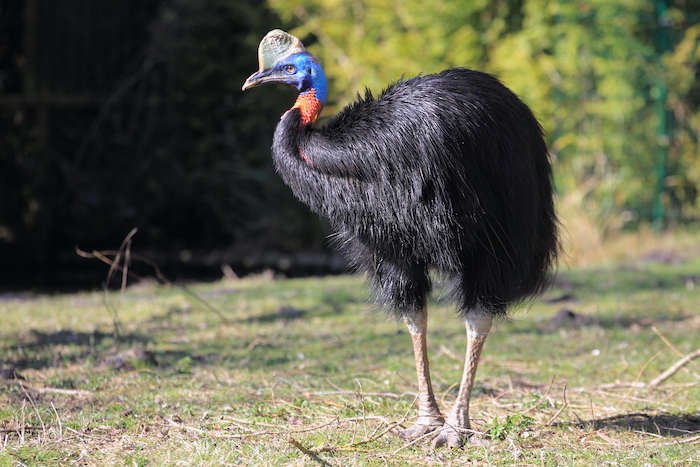The cassowary is a bird that you do not want to mess with. Though not quite the largest bird out there, these nearly 2-metre (6-foot) tall flightless animals are easily the most deadly bird to humans.
The reason? An epic set of talons on their feet, featuring a giant claw on their inner toes. Cassowaries use these claws as weapons, making them a bird that we try to leave alone as much as possible.
But according to a new study, some ancient humans had a different idea. Archeological evidence suggests that they actually raised cassowaries, much as we do birds like chickens or geese.
Egg fragments tell the tale
What came first? According to this research, cassowaries were the first birds to be raised by humans. (Getty Embed)
Today, Papua New Guinea is one of two homes to the cassowary (the other is Australia). Full of lush rainforests, it is also home to numerous groups of Indigenous Peoples, collectively known as Papuans. Recently, a team of researchers in Papua New Guinea decided to look more deeply into how Papuan ancestors lived there many thousands of years ago. This news about cassowaries was one of their discoveries during digs through the remains of ancient human civilizations.
The researchers put together this information by collecting around 1,000 fossilized eggshell fragments. These pieces date back between 6,000 and 18,000 years and are from late stages of egg grow. In other words, whoever had these eggs wasn't trying to eat them as an egg. These people were actively rearing, or raising, cassowary chicks. It is the earliest known example of humans rearing birds of any species—nearly twice as long ago as the first evidence of raising chickens (which was around 9,500 years ago).
For what purpose?
Do not mess with those feet! (Getty Embed)
Given how unruly and dangerous cassowaries are as adults, why would anyone try to raise them? It is true that you can't really domesticate a cassowary. (Domestication is basically the process of making an animal a pet, or at least an animal with a safer, more predictable relationship with humans.) But cassowaries can still be raised on a farm, if the people are careful enough. As for why? Food for starters!
Even today in Papua New Guinea, cassowary meat is considered a delicacy. But that's not all. Bones are used as tools, and the feathers are worn on clothing and have ceremonial significance. There's every reason to believe that ancient Papuans had a similar view of the bird thousands of years ago.
In addition, the research indicates that the exact species involved was likely the dwarf cassowary, which though still large, is a smaller species of this bird. Still a tough customer, but a little less dangerous, perhaps? Regardless, we do not recommend that any of you start a cassowary farm any time too soon!
 The cassowary is a ratite, a type of large flightless birds related to ostriches and emus. (ID 53535065 © Lukas Blazek | Dreamstime.com)
The cassowary is a ratite, a type of large flightless birds related to ostriches and emus. (ID 53535065 © Lukas Blazek | Dreamstime.com)










😉 🙁 😮 😎 😕 😎